#agileleadership
Photo


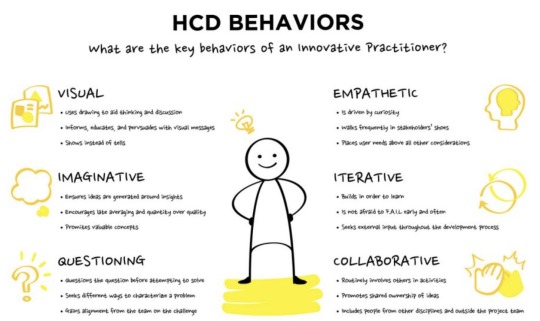

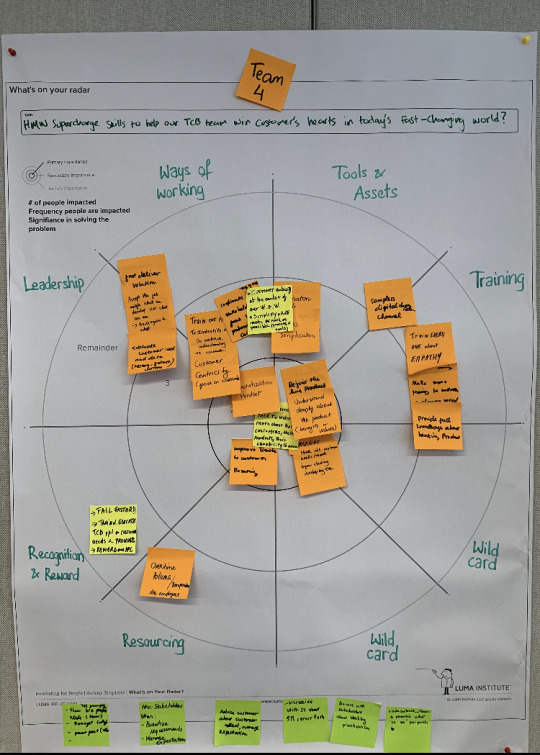
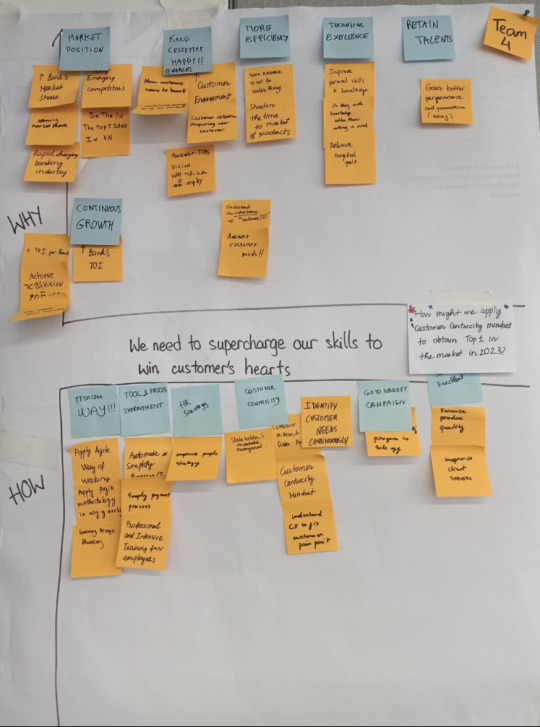

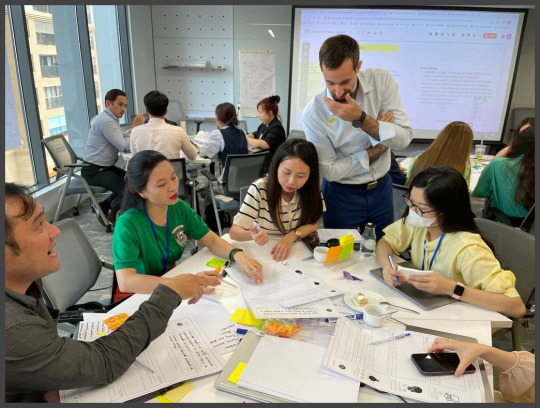


Deeper dive into Design Thinking tool box
In 2018, #StandardCharteredBank run multiple #LUMA system course.
This is was a 3 day deep dive on Human centered Design framework: trainees discovered, explored and practiced the Luma Toolset such as:
Interviewing, Walk-a-Mile immersion, Stakeholder Mapping, Experience Diagramming, Creative Matrix, Buy a Feature, Build your own, Concept Poster... so many interesting and practical methods that can and should be used at work.
Last week, my colleagues and I at TCB have enjoyed the Advanced Design Thinking training lead by Doodledesign.
After a first 2 days virtual training during Covid period in 2022, we could eventually enjoy a face to face session. Chris is and his team are awesome facilitators, this 2 days were very smooth and practical. Design Thinking offer a deep range of tools but we really focused on practicing few technics:
What's on your Radar?
Visualize the vote
Abstraction Laddering
Round Robin
Cover Story Mock-up
Critique - (or the art of receiving feedback!
Build your own
Of course we first reviewed the #DoubleDiamondofDesign, where these techniques are key tools of the journey from the Problem Space to the Solution Space.
We also had the opportunity to review the key design thinking facilitator attributes, where each trainee reflected on their strength and weakness.
My key reflection by the end of these 2 days are the following:
What is in for me as a Trainee?
• Which of the tools can I really use as transformation leader and Agile Coach?
• Which tool dare to practice in real situation with our challenging stakeholders?
What is in for me as Facilitator?
• What can I learn from Chris?
• What are the Facilitations skills I can grow?
• What are the tools, the wordings, the games I can adapt to our Coaching context in order to make our “clients” fully engaged.
Being myself a facilitator, having continuous coaching sessions, training every week our teams to embrace the Agile Mindset, attending this advanced Design Thinking training is a great opportunity to be in the trainees shoes, observe and learn! So please let me thank #Techcombank, Chris and all the participants (especially Group 4) for this opportunity.
Be ready Techcomers for the next advanced Agile training, cause we will improve based on our learning!
Cheers
2 notes
·
View notes
Text
When trust is at the core, teams grow stronger, more agile, and more resilient. 💡
Visit our website: https://agile-operator.com/

0 notes
Text

Unveiling the Core Purpose of Servant Leadership in Agile Teams - Agilonomics
Discover how servant leadership can transform your team's productivity and collaboration in agile environments. By placing the needs of the team above all, servant leaders create an environment where individuals are empowered to excel. This leadership style focuses on facilitating growth, encouraging innovation, and building a culture of trust. The result is a more cohesive, motivated, and high-performing team capable of achieving outstanding results. If you're looking to boost your team's productivity while fostering a positive work culture, understanding the principles of servant leadership is essential.
#agile#agilemethodology#agile coaching#agilemindset#agiletransformation#agilonomics#servant leadership#leadership#agileleadership
0 notes
Text
Agile Coaching (ICP-ACC) Certification with Vijay Bandaru | Learnovative
Enhance your Agile coaching skills with the ICP-ACC Certification at Learnovative, led by expert trainer Vijay Bandaru. This course provides in-depth knowledge of Agile coaching techniques, helping you effectively guide teams through Agile transformations. Develop your coaching mindset, master facilitation skills, and improve team dynamics. Learn from real-world scenarios and practical exercises designed to refine your coaching abilities. Join Learnovative to become a certified Agile coach and empower your teams to achieve their best. Enroll now to advance your Agile coaching career.
call now : 09949994949
#AgileCoaching#ICPACC#AgileCertification#VijayBandaru#Learnovative#AgileTraining#CoachingSkills#AgileTransformation#AgileLeadership#TeamFacilitation#CSM#CSPO#ACSM#ACSPO#CSMtraininginHyderabad#CSMtrainingcoursesinHyderabad#ScrumMastertraininginHyderabad#ScrumMastercertificationinHyderabad#CertifiedScrumMastercertificationinHyderabad#CertifiedScrumMastercertificationtraininginHyderabad#CSMcertificationinHyderabad#CertifiedScrumTrainerinHyderabad#CertifiedAgileScrumTrainerinHyderabad#CertifiedEnterpriseCoachinHyderabad#CertifiedTeamCoachforCSMinHyderabad#CertifiedTeamCoach#CSPOinHyderabad
0 notes
Text
#ProjectManagement#MatrixProject#AgileLeadership#InnovativeProjects#Adaptability#VisionaryLeadership#TeamEmpowerment#RiskManagement#TechTools#ProjectVision
0 notes
Text
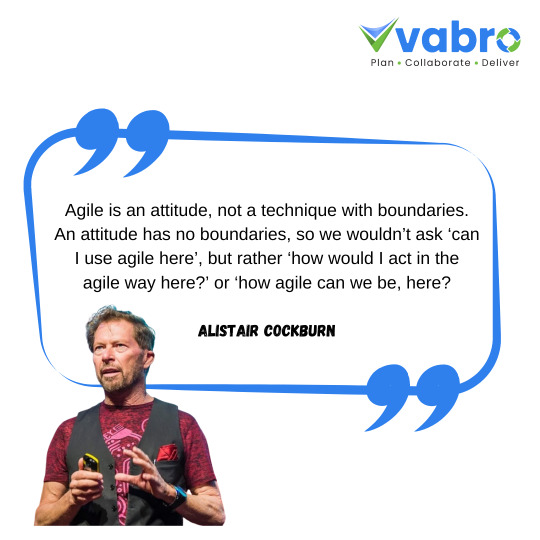
Think beyond boundaries with Vabro’s Agile solutions.
Get Started with Vabro @ www.vabro.com
#Vabro#Agile#AgileMindset#AgileLeadership#ProjectManagement#TeamCollaboration#ContinuousImprovement#AlistairCockburn#AgilePrinciples#AgileDevelopment#WorkplaceCulture#scrumstudy
1 note
·
View note
Text
The Power of PMI ACP Certification
In today's fast-paced business environment, the ability to adapt quickly and efficiently is paramount. Organizations are increasingly turning to Agile methodologies to manage projects and drive innovation. As a result, professionals who are skilled in Agile practices are in high demand. One of the most respected certifications in this domain is the pmi acp (Agile Certified Practitioner) Certification. This credential is a testament to a professional's ability to deliver projects effectively using Agile principles and practices. In this blog, we will delve into the world of PMI ACP Certification, exploring its benefits, requirements, and how it can propel your career forward.
Understanding PMI ACP Certification
The pmi acp certification is offered by the Project Management Institute (PMI), a globally recognized authority in project management. It is designed for project managers who want to demonstrate their expertise in Agile principles and methodologies. The certification validates your understanding of various Agile approaches, including Scrum, Kanban, Lean, extreme programming (XP), and test-driven development (TDD).
Benefits of PMI ACP Certification
Earning the PMI ACP Certification can significantly enhance your career prospects and project management capabilities. Here are some of the key benefits:
1. Competitive Edge: In a crowded job market, the PMI ACP Certification sets you apart from other candidates. It showcases your commitment to Agile practices and your ability to navigate complex project environments.
2. Global Recognition: PMI is a globally recognized organization, and the PMI ACP Certification is valued across industries and geographies. This recognition can open doors to international opportunities and collaborations.
3. Enhanced Skills: The certification process involves rigorous study and application of Agile principles. This deepens your understanding of Agile methodologies and improves your project management skills.
4. Networking Opportunities: As a PMI ACP Certification holder, you become part of a global community of Agile practitioners. This network can provide support, insights, and potential career opportunities.
5. Higher Earnings: Certified professionals often command higher salaries. According to PMI's Earning Power: Project Management Salary Survey, certified professionals earn up to 20% more than their non-certified peers.
Eligibility and Requirements for PMI ACP Certification

To earn the PMI ACP Certification, you must meet certain eligibility criteria and pass the PMI ACP exam. Here are the key requirements:
1. General Project Experience: You must have at least 2,000 hours working on project teams or 1,500 hours working on Agile project teams.
2. Agile Project Experience: A minimum of 1,500 hours working on Agile project teams is required.
3. Education: You need to have completed 21 contact hours of Agile practice education.
4. PMI Membership: While not mandatory, becoming a PMI member can reduce the cost of the certification exam.
5. Exam: The PMI ACP Certification exam consists of 120 multiple-choice questions, and you have three hours to complete it. The passing score is not disclosed by PMI, but thorough preparation is essential.
Preparing for the PMI ACP Certification Exam
Preparation for the PMI ACP Certification exam is crucial. Here are some tips to help you get ready:
1. Study the PMI-ACP Exam Handbook: This handbook provides detailed information about the exam content and structure.
2. Enroll in a PMI ACP Certification Training Course: Many training providers offer courses specifically designed to prepare you for the exam.
3. Join Study Groups: Engaging with peers in study groups can enhance your learning and provide different perspectives on Agile practices.
4. Use Practice Exams: Practice exams can help you familiarize yourself with the format of the actual exam and identify areas where you need further study.
5. Review Agile Principles and Frameworks: Make sure you have a thorough understanding of Agile principles, practices, and frameworks.
The Impact of PMI ACP Certification on Your Career
Achieving the PMI ACP Certification can have a profound impact on your career. It positions you as a leader in Agile project management and can lead to new opportunities and responsibilities. Employers value the certification as it demonstrates your ability to deliver projects successfully using Agile methodologies.
Moreover, the knowledge and skills you gain through the certification process can help you contribute more effectively to your organization's Agile transformation. You will be better equipped to lead teams, manage projects, and drive innovation.
Conclusion
The PMI ACP Certification is a powerful credential for project managers looking to specialize in Agile methodologies. It not only validates your expertise but also opens up new career opportunities and enhances your earning potential. By meeting the eligibility requirements and preparing diligently for the exam, you can join the ranks of certified Agile practitioners and make a significant impact in your field.
Whether you are new to Agile or looking to deepen your expertise, the PMI ACP Certification is a valuable investment in your professional development. It is a testament to your commitment to excellence in project management and your ability to thrive in an ever-changing business landscape. Embrace the challenge, earn your PMI ACP Certification, and unlock the full potential of your Agile career.
#PMIACPCertification#AgileCertifiedPractitioner#ProjectManagement#AgileMethodology#PMICertification#CareerAdvancement#AgileProjectManagement#ProfessionalDevelopment#AgilePractitioner#PMIACP#AgileLeadership
1 note
·
View note
Text
Benefits of Agile Transformation: Why Your Business Needs It
Agile Transformation has become increasingly essential for businesses striving to thrive in today's dynamic and competitive market. In an era of rapid technological advancements and shifting consumer preferences, organizations need to be agile and adaptive to stay ahead of the curve. Agile Transformation offers a strategic approach to achieving this agility, allowing businesses to embrace change, innovate, and deliver value to their customers more effectively.
Improved Flexibility and Adaptability
One of the primary benefits of Agile Transformation is improved flexibility and adaptability. Traditional business models often struggle to keep pace with the fast-evolving market dynamics, leading to missed opportunities and stagnation. Agile methodologies, on the other hand, emphasize iterative development and continuous feedback, enabling businesses to respond quickly to changes in the market. By breaking down complex projects into smaller, more manageable increments, Agile Transformation empowers teams to adapt their plans and priorities in real-time, ensuring that they stay aligned with business objectives.
Enhanced Collaboration and Communication
Agile Transformation also fosters enhanced collaboration and communication within organizations. Traditional hierarchical structures can hinder communication and collaboration, leading to silos and inefficiencies. Agile methodologies promote cross-functional teams and open communication channels, facilitating collaboration among team members from different departments and disciplines. By encouraging transparency and teamwork, Agile Transformation enables organizations to leverage the collective expertise of their workforce and drive innovation.
Increased Efficiency and Productivity
Another significant benefit of Agile Transformation is increased efficiency and productivity. Agile methodologies focus on delivering value to customers through iterative development and continuous improvement. By prioritizing the most valuable features and delivering them incrementally, Agile Transformation minimizes waste and maximizes the return on investment. Moreover, Agile practices such as daily stand-up meetings and sprint reviews help teams stay focused and motivated, leading to higher productivity levels and faster time-to-market.
Better Customer Satisfaction
Agile Transformation places a strong emphasis on customer satisfaction and value delivery. By involving customers early and often in the development process, Agile methodologies ensure that products and services meet their needs and expectations. Continuous feedback loops enable businesses to gather valuable insights from customers and make necessary adjustments to their offerings quickly. As a result, Agile Transformation not only enhances customer satisfaction but also builds trust and loyalty, driving long-term business success.
Competitive Advantage
In the current highly competitive business environment, securing a competitive edge is vital for survival. Agile Transformation enables businesses to stay ahead of the competition by fostering innovation and adaptability. By embracing change and embracing a culture of continuous improvement, Agile organizations can innovate faster, respond to market trends more effectively, and seize new opportunities ahead of their competitors. In a world where disruption is the norm, Agile Transformation is a strategic imperative for businesses looking to maintain their relevance and leadership position.
Cost Reduction and Risk Management
Finally, Agile Transformation helps businesses reduce costs and manage risks more effectively. Traditional project management approaches often suffer from budget overruns and missed deadlines due to scope creep and unforeseen obstacles. Agile methodologies mitigate these risks by breaking down projects into smaller, manageable iterations and delivering value incrementally. This iterative approach allows businesses to identify and address risks early in the development process, minimizing the impact on project timelines and budgets. Additionally, Agile Transformation promotes a culture of experimentation and learning, enabling businesses to innovate with confidence and minimize the fear of failure.
Conclusion In conclusion, Agile Transformation offers an uncountable number of benefits for businesses seeking to thrive in today's fast-paced and competitive environment. From improved flexibility and adaptability to enhanced collaboration and communication, Agile methodologies empower organizations to innovate, deliver value to customers, and gain a competitive edge. By embracing Agile Transformation, businesses can increase efficiency, reduce costs, and manage risks more effectively, ultimately driving long-term growth and success.
#transformation#agile#agilemethodologies#agilepractices#agileframework#scrum#kanban#lean#agileadoption#agileinformation#agileculture#agilemindset#agileprinciples#agileteams#agileleadership
0 notes
Text
Agile Evolution: Adapting Sprint Management for Changing Needs
In the fast-paced world of project management, the evolution of agile methodologies has become imperative to keep pace with changing needs and dynamic environments. One such evolution is the adaptation of sprint management, a key component of agile frameworks, to suit the ever-changing demands of modern projects. In this blog post, we will explore the concept of agile evolution and dive into how organizations can effectively adapt sprint management to meet their evolving needs.
Understanding Agile Evolution
Agile methodologies originated from the software development industry, emphasizing iterative development, collaboration, and flexibility. Over time, agile principles have transcended their original domain and found application in various industries, including marketing, finance, and manufacturing. This evolution reflects the need for organizations to respond quickly to market changes, customer feedback, and technological advancements.
The Role of Sprint Management
At the heart of agile methodologies lies sprint management, a framework for breaking down projects into manageable chunks called sprints or iterations. Each sprint typically lasts two to four weeks and involves planning, execution, review, and adaptation. Sprint management promotes transparency, collaboration, and continuous improvement, enabling teams to deliver value incrementally and respond to changes effectively.
Challenges in Adapting Sprint Management
While sprint management offers numerous benefits, adapting it to changing needs poses several challenges. These challenges include:
Scope Creep: Changes in project scope during sprints can disrupt timelines and priorities.
Resource Constraints: Limited resources may hinder the ability to adapt quickly to evolving requirements.
Communication Breakdowns: Inadequate communication among team members can lead to misunderstandings and delays.
Resistance to Change: Resistance from team members or stakeholders may impede the adoption of new practices.
Strategies for Adapting Sprint Management
To overcome these challenges and successfully adapt sprint management for changing needs, organizations can implement the following strategies:
Prioritize Flexibility: Embrace change as a core principle of agile methodologies. Encourage teams to remain flexible and responsive to evolving requirements.
Effective Planning: Determine precise objectives, outputs, and standards for evaluation in each sprint.Define clear objectives, deliverables, and success criteria for each sprint.
Regular Communication: Foster open and transparent communication among team members, stakeholders, and customers. Regularly review progress, solicit feedback, and address concerns promptly.
Empowerment and Accountability: Empower team members to take ownership of their work and make decisions autonomously. Establish accountability mechanisms to ensure that commitments are met.
Continuous Improvement: Embrace a culture of continuous improvement by regularly reflecting on processes, identifying areas for enhancement, and implementing changes iteratively.
Conclusion
In conclusion, agile evolution is essential for organizations seeking to thrive in today’s dynamic business landscape. By adapting sprint management for changing needs, organizations can enhance their agility, responsiveness, and ability to deliver value to customers. By prioritizing flexibility, effective planning, communication, empowerment, and continuous improvement, organizations can overcome challenges and unlock the full potential of agile methodologies.
As the pace of change continues to accelerate, embracing agile evolution becomes not just a competitive advantage, but a necessity for survival in the ever-evolving marketplace.
#artificial intelligence#projectmanagement#marketing#SprintManagement#AgileWorkflow#ProjectManagement#Scrum#TeamProductivity#AgileMethodology#ProductDevelopment#TimeManagement#TaskPrioritization#CollaborativeTeams#AgileLeadership#TaskManagement#TeamCoordination#IterativeDevelopment#ContinuousImprovement#AgileProcesses#ProjectPlanning#TeamEmpowerment#SprintPlanning
0 notes
Text
Beyond the Basics: Advanced PDU Earning Strategies for Agile Leaders
Discover advanced strategies tailored for Agile leaders seeking to renew their PMP certification. Elevate your professional development with innovative PDU earning tactics, ensuring you stay ahead in Agile project management. Explore specialized Agile training, leadership initiatives, and more to master your PMP renewal journey.

0 notes
Text
Unveiling the Power of LESS: 3-Day training with Bas Vodde and former teammates in Bangkok


End of May 2024, I flew in from Saigon to Bangkok for a 3-day intensive training on the LESS Agile Framework, led by none other than Bas Vodde, the creator of LESS himself! The journey offered a chance to rediscover the legendary Thailand traffic jams – a (slightly hair-raising) tuktuk ride providing a nostalgic reminder.
More importantly, it was the perfect opportunity to reconnect with my former teammates, as we'd planned to attend the training together for a while already.

The hustle and bustle of Bangkok recently served as the backdrop for a smooth learning experience!
For those unfamiliar, LESS (Large Scale Scrum) is a powerful scaling framework designed to empower multiple teams working on a single product to deliver value iteratively and collaboratively. Here's where LESS shines: it tackles complex projects by advocating for a broader product definition. Unlike traditional, single-team Scrum, LESS encourages defining the product in a more holistic way. This considers not just the immediate features, but also the overall vision, user needs, and potential future iterations. This broader definition empowers teams to see the bigger picture and prioritize work accordingly.
But a broader product definition requires a special kind of team. LESS thrives with its focus on highly collaborative, cross-functional teams. Bas Vodde emphasized that these teams need to be 100% dedicated to the Scrum process for the duration of the sprint. More importantly, team members need to embrace a learning mindset and be willing to step outside their original roles. Delivering a complex product in LESS requires everyone to contribute beyond their siloed expertise. Team members might need to learn new skills, participate in activities outside their comfort zone, and ultimately, become well-rounded contributors to the entire product development process.


Having the privilege of learning directly from Bas Vodde, the architect of LESS, provided invaluable insights into these core principles. The training equipped me with the tools and knowledge to confidently navigate complex projects with a broader product definition and foster a collaborative environment where cross-functional teams can thrive. This Bangkok adventure, filled with learning and reconnection, was a truly rewarding experience.




#agile coach#bangkok#friendship#training#agileleadership#scrummaster#agile coaching#agile development
0 notes
Text
In today's fast-paced world, the ability to adapt and bounce back is crucial for effective leadership. Discover why these traits are more important than ever and how they can elevate your leadership game. 🚀 https://bit.ly/3xFI2wQ
Visit us: https://agile-operator.com/

0 notes
Text
Strategic Approaches to Agile Leadership: Earning 60 PDUs for PMP Renewal
Introduction:
Mastering Agile leadership has become critical in complex ways, fostering innovation that will enable organizations to succeed in today’s rapidly evolving business environment. Agile leaders must continually refine their skills learn best practices and effectively lead teams and projects. One of the most valuable ways to do this is to obtain Professional Development Units (PDUs), especially for those with Project Management Professional (PMP) certification who want a PMP Renewal PDU In this blog post, we will discuss how 60 get the benefits story PDUs for Agile leadership. We will explore strategies, and enhance their leadership capabilities.
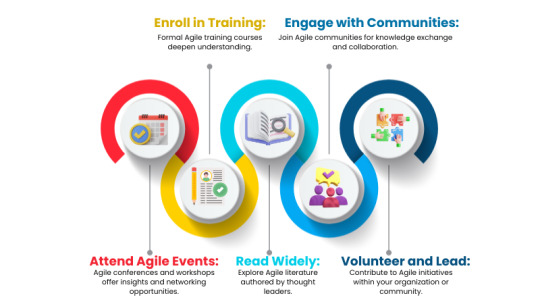
Understanding PDUs and PMP Renewal:
Before we delve into the processes, let’s clarify what PDUs are and their importance for Agile leaders, especially those with PMP certification. PDU is a measure used by the Project Management Institute (PMI) to determine the amount of time spent on project management related to professional development activities PDU obtaining and reporting is important for PMP-certified holders to maintain their certification by On the PMP renewal PDU.
Strategies for Earning 60 PDUs as an Agile Leader:
1. Attend seminars and impromptu workshops:
Accelerated meetings and workshops provide valuable opportunities to learn from industry experts, network with peers, and gain insights into emerging products and trends. Look for conferences that specifically focus on agile leadership, such as the Agile Leadership Summit, Scrum Gathering, or PMI’s Agile Certified Practitioner (PMI-ACP) conference.
2. Enroll in agile training courses:
Invest in a customized Agile training course to enhance your understanding of Agile methodologies, processes, and leadership principles. Look for courses accredited by PMI or other reputable organizations, such as Certified Scrum Master (CSM), Certified Scrum Product Owner (CSPO), or advanced SAFe (Scaled Agile Framework) certification.
3. Join active communities and events:
Interact with the Agile community online and offline and in various forums to exchange ideas, share experiences, and collaborate with fellow Agile professionals. Participating in forums like the Agile Alliance, Scrum.org, or PMI’s Agile Community of Practice can provide valuable insights and networking opportunities.
4. Read quick books:
Continue to expand your knowledge by reading books, articles, and blogs on Agile leadership, project management, and related topics. Look for books written by prominent Agile thought leaders and practitioners to stay up to date with the latest developments and best practices in the industry.
5. Volunteer for Agile Initiatives:
Participate in Agile-related projects in your organization or community, such as leading Agile transformation efforts, training Agile teams, or organizing Agile workshops. Volunteering not only helps your career growth but also shows your commitment to the Agile community.
6. Do your own study and research:
Take time to educate yourself and research to find specific areas of interest or fill knowledge gaps in Agile leadership. Use online resources, webinars, podcasts, and learning journals to deepen your understanding and stay current on relevant topics.
7. List and report your PDUs:
Maintain detailed records of PDUs generated from activities, ensuring compliance with PMI’s PDU reporting requirements. Use PMI’s online Continuing Certification Requirements (CCR) system to accurately report your PDUs and track your progress toward PMP renewal.
Conclusion:
Mastering agile leadership is an ongoing journey that requires dedication, learning, and change. By providing access to PDU 60 through activities aligned with Agile leadership development, you will not only be able to maintain your PMP certification through new PMP PDUs but also enhance your leadership skills, for organizational agility, and provide more value for your teams and stakeholders. Embrace the mindset of lifelong learning and take every opportunity to grow as an agile leader in today’s dynamic business environment.
#AgileLeadership#PDUs#PMPRenewal#ContinuousLearning#LeadershipDevelopment#AgileMethodologies#PMP#ProfessionalGrowth
0 notes
Text
Advanced Certified Scrum Product Owner (A-CSPO) Certification with Vijay Bandaru | Learnovative
Elevate your Agile skills with the Advanced Certified Scrum Product Owner (A-CSPO) Certification at Learnovative. Led by expert trainer Vijay Bandaru, this course deepens your understanding of Scrum principles and practices. Gain advanced techniques for product management, enhance your leadership abilities, and boost your career prospects. Join Learnovative for an immersive learning experience designed for aspiring Scrum professionals. Enroll now to become a distinguished A-CSPO and lead successful Agile teams.
call now : 09949994949
#Scrum#A-CSPO#AgileCertification#ProductOwner#VijayBandaru#Learnovative#AgileTraining#ScrumCertification#AdvancedScrum#AgileLeadership#CSM#CSPO#ACSM#ACSPO#CSMtraininginHyderabad#CSMtrainingcoursesinHyderabad#ScrumMastertraininginHyderabad#ScrumMastercertificationinHyderabad#CertifiedScrumMastercertificationinHyderabad#CertifiedScrumMastercertificationtraininginHyderabad#CSMcertificationinHyderabad#CertifiedScrumTrainerinHyderabad#CertifiedAgileScrumTrainerinHyderabad#CertifiedEnterpriseCoachinHyderabad#CertifiedTeamCoachforCSMinHyderabad#CertifiedTeamCoach#CSPOinHyderabad
0 notes
Text
Unlike traditional PMOs that focus on governance, compliance, and control, an Agile PMO operates with a different mindset and set of responsibilities. Its primary objective is to support Agile teams in delivering value quickly and effectively, while maintaining alignment with organizational goals and strategies.
#AgilePMO#AgileTeams#AgileLeadership#TeamSuccess#InnovationInAgile#ChangeManagement#OrganizationalGoals#TeamEfficiency#AgileCulture#Adaptability
0 notes
Text
Impediment Removal - Step-by-Step Guide

Removing impediments is a critical endeavor for any Scrum Master. Here is a structured approach to identifying and eliminating the roadblocks that your team may encounter. It offers practical steps to overcome challenges and prevent them from arising in the future.
Step 1: Establish an “Impediment Radiator”*
- Create a way for all team members to record observed impediments.
- Ensure the Radiator is accessible and regularly reviewed for updates and progress.
Step 2: Prioritizing Impediments
- Assess and prioritize impediments based on their impact on the team’s productivity and - sprint goals.
- Focus on high-priority items that can cause significant delays or issues.
Step 3: Root Cause Analysis
- Conduct a thorough analysis to understand the underlying causes of the impediments.
- Use techniques such as the 5 Whys or fishbone diagram to identify root causes.
Step 4: Strategy Development
- Develop strategies for removing each impediment, involving the team in brainstorming sessions.
- Consider short-term fixes and long-term solutions to prevent recurrence.
Step 5: Stakeholder Engagement
- Engage with stakeholders who can help remove impediments or provide necessary resources.
- Communicate the impact of impediments on project outcomes to gain support.
Step 6: Taking Action
- Implement the strategies developed for impediment removal.
- Monitor the progress and adjust the approach as necessary.
Step 7: Measuring Success
- Define clear metrics to measure the effectiveness of impediment removal efforts.
- Track improvements in team velocity and sprint completion rates.
Step 8: Reflecting in Retrospectives
- Review the impediment removal process during sprint retrospectives.
- Discuss what worked, what didn’t, and how the process can be improved.
Step 9: Continuous Improvement
- Iterate on the impediment removal process based on feedback and metrics.
- Encourage a culture of continuous improvement within the team.
Step 10: Sharing Learnings
- Document successful strategies and share them with the broader organization.
- Contribute to a knowledge base that can help other teams with similar issues.
You can learn more by visiting Vabro
#Vabro#Scrum#ScrumImpediments#ScrumMaster#ScrumProjectManagement#AgileLeadership#RemovingImpediments#LeadingAgile
1 note
·
View note